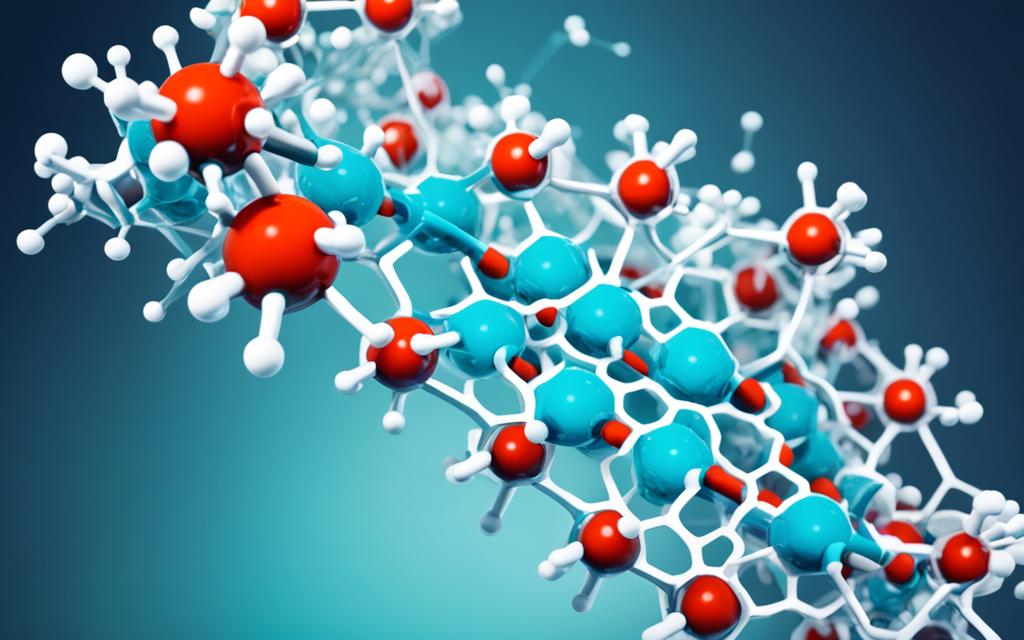In this article, we will delve into the intriguing question of whether the molecule hydrogen cyanide (HCN) is polar or nonpolar. Understanding the polarity of HCN has significant implications in various fields, from chemistry to biochemistry. We will explore the factors that determine the molecular polarity of HCN and examine the profound impact this property can have. By the end of this comprehensive analysis, you will have a clear understanding of the nature of HCN and its role in scientific applications.
Introduction to Molecular Polarity
Molecular polarity is a fundamental concept in chemistry that describes the unequal distribution of electrons within a molecule. This asymmetric distribution of charge can have profound implications for a molecule’s properties and behavior. The polarity of a molecule is primarily determined by the electronegativity difference between the atoms involved in the chemical bonds.
Electronegativity refers to the ability of an atom to attract shared electrons in a chemical bond. The greater the electronegativity difference between the atoms, the more polar the bond will be. This polarity can result in the formation of a dipole moment, where one end of the molecule carries a partial positive charge and the other end carries a partial negative charge.
Understanding molecular polarity is crucial in various fields, including chemistry, biology, and materials science. The polarity of a molecule can influence its solubility, reactivity, and interaction with other substances, making it a key factor in many chemical and biological processes.
In the following sections, we will explore the concept of molecular polarity in more depth, focusing on the specific case of hydrogen cyanide (HCN) to understand its implications and applications.
Exploring the Structure of HCN
Hydrogen cyanide, or HCN, is a linear molecule composed of a hydrogen atom (H), a carbon atom (C), and a nitrogen atom (N). The chemical formula for HCN is, well, HCN. To determine the polarity of HCN, we need to examine the arrangement and electronegativity of the atoms within the molecule.
The hydrogen atom is bonded to the carbon atom, and the carbon atom is, in turn, bonded to the nitrogen atom. This linear arrangement is crucial in understanding the polarity of HCN. The electronegativity values of the atoms involved also play a vital role in determining the molecule’s polarity.
| Atom | Electronegativity (Pauling Scale) |
|---|---|
| Hydrogen (H) | 2.20 |
| Carbon (C) | 2.55 |
| Nitrogen (N) | 3.04 |
The electronegativity difference between the atoms in HCN is a key factor in determining its polarity. Nitrogen, being the most electronegative atom in the molecule, has a strong tendency to attract electrons, while hydrogen has a relatively low electronegativity. This difference in electron-withdrawing ability creates a partial positive charge on the hydrogen atom and a partial negative charge on the nitrogen atom, resulting in the formation of a bond dipole.
Is HCN Polar or Nonpolar?
The polarity of HCN is determined by the electronegativity difference between the atoms in the molecule. Hydrogen has an electronegativity value of 2.20, carbon has an electronegativity of 2.55, and nitrogen has an electronegativity of 3.04 on the Pauling scale. The Polarity of HCN is a crucial factor in understanding the properties and behavior of this molecule.
To determine whether HCN is polar or nonpolar, we need to examine the electronegativity difference between the atoms. The electronegativity difference between hydrogen and carbon is 0.35, while the difference between carbon and nitrogen is 0.49. This indicates that the carbon-nitrogen bond is more polar than the carbon-hydrogen bond.
However, the linear structure of HCN results in the cancellation of the individual bond dipoles. Since the molecule has a symmetric arrangement, with the carbon atom situated between the hydrogen and nitrogen atoms, the net dipole moment of HCN becomes zero. This means that HCN is a nonpolar molecule, despite the presence of polar bonds within its structure.
The polarity, or lack thereof, of HCN has important implications in various fields, such as chemistry and biochemistry. Understanding the hcn polar or nonpolar nature of this molecule can help explain its interactions and behavior in different chemical and biological systems.
Factors Determining Molecular Polarity
The polarity of a molecule, such as hydrogen cyanide (HCN), is determined by several key factors that influence the distribution of electrons within the chemical bonds. Understanding these Factors Determining Molecular Polarity is crucial for analyzing the Implications of HCN’s Polarity and its various applications.
One of the primary factors is the electronegativity difference between the atoms in the molecule. Electronegativity is a measure of an atom’s ability to attract shared electrons in a chemical bond. When there is a significant difference in electronegativity between the atoms, the electrons are more likely to be unevenly distributed, resulting in a polar molecule.
Another important factor is the molecular geometry or the spatial arrangement of the atoms within the molecule. The shape of the molecule can either enhance or cancel out the individual bond dipoles, ultimately determining the overall polarity of the molecule.
Additionally, the number and type of bonds present in the molecule can also influence its polarity. The presence of polar covalent bonds, where the shared electrons are not equally distributed, can contribute to the overall polarity of the molecule.
By understanding these Factors Determining Molecular Polarity, you can better analyze the Implications of HCN’s Polarity and its impact on various scientific applications, from chemistry to biochemistry.
Conclusion
In our exploration of the polarity of HCN, we have uncovered the fascinating truth that hydrogen cyanide (HCN) is, in fact, a nonpolar molecule. Despite the presence of polar bonds within its structure, the linear arrangement of the atoms results in the cancellation of the individual bond dipoles, rendering HCN as a non-polar entity.
The factors determining molecular polarity, such as electronegativity differences and molecular geometry, have played a crucial role in this determination. By understanding these fundamental principles, we can better appreciate the implications of HCN’s polarity in various scientific applications, from chemistry to biochemistry.
As we conclude this insightful analysis, it is clear that the polarity of HCN is a complex and fascinating topic, with far-reaching implications. By exploring the nuances of molecular structure and the factors that shape it, we can gain a deeper understanding of the world around us and unlock new possibilities in scientific research and exploration.










